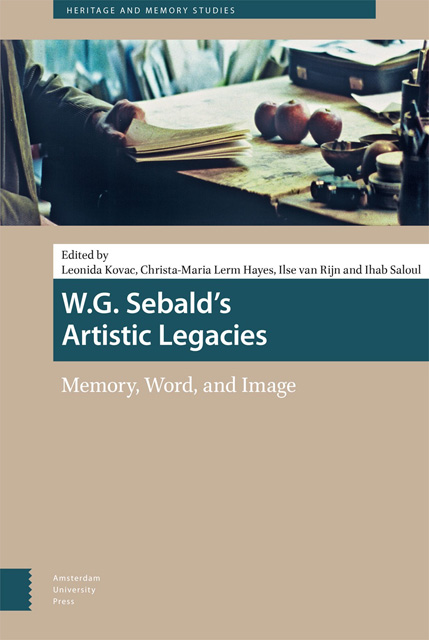12 - Memory, Word, and Image in Sebald and Joyce: Towards a Transhistorical Ethics Communicated Through Minor Interventions in the Form of the Printed Book
Published online by Cambridge University Press: 26 October 2023
Summary
Abstract
The writers James Joyce and W.G. Sebald adhered to, but also manipulated in similar and often hardly perceptible ways, the typographical conventions within the institution of literature. Writing on either side of the Second World War, they sought to sensitize readers to both the connectedness and the fragility of human lives. Both authors, by humbly placing their characters’ lives (micro-histories) at the outer edges of the maelstrom of catastrophic failures of regimes, ultimately make their readers hope against hope that remembering, connecting, and conceptualizing history through their word and image strategies can somehow modify the otherwise inevitable repetitions in and of history.
Keywords: Materiality of Books, Word and Image, Artists’ Responses to Literature, Trauma and Colonialism, Iconology, Experimental Institutionalism, Connections
This chapter extends the above argument to the—related—ways in which contemporary artists give form and value to societal connectedness: Joseph Beuys, Tacita Dean, Louwrien Wyers, and Walid Raad. Lastly, such understated experiments with institutional and academic conventions are referred to the life and work of the research school Amsterdam School for Heritage, Memory and Material Culture (AHM), host of the symposium from which this volume emerged.
Among James Joyce scholars, W.G. Sebald’s death in 2001 prompted the comment that the “new Joyce” had passed away. Despite the fact that different predecessors have more frequently been associated with Sebald’s oeuvre, I wish to ask how both writers’ visual interventions in their texts can be compared. Some close readings of examples will reveal some surprisingly close connections in their use of imagery to accompany texts.
Subsequently, I will ask what one may learn from this, why vaguely iconographic similarity may be in any way interesting. My associations and speculations go in several directions: first to posit that it would be wrong to remain with iconography if a certain Warburgian iconology of changing, traveling images can be ascertained. That kind of a personally inflected ordering of the visual (and textual) world lets memory and a historical psychology enter, which is arguably quite close in art-historical terms to how Georges Didi-Huberman sees the political import of a Warburgian legacy.
- Type
- Chapter
- Information
- W. G. Sebald's Artistic LegaciesMemory, Word, and Image, pp. 227 - 242Publisher: Amsterdam University PressPrint publication year: 2023

